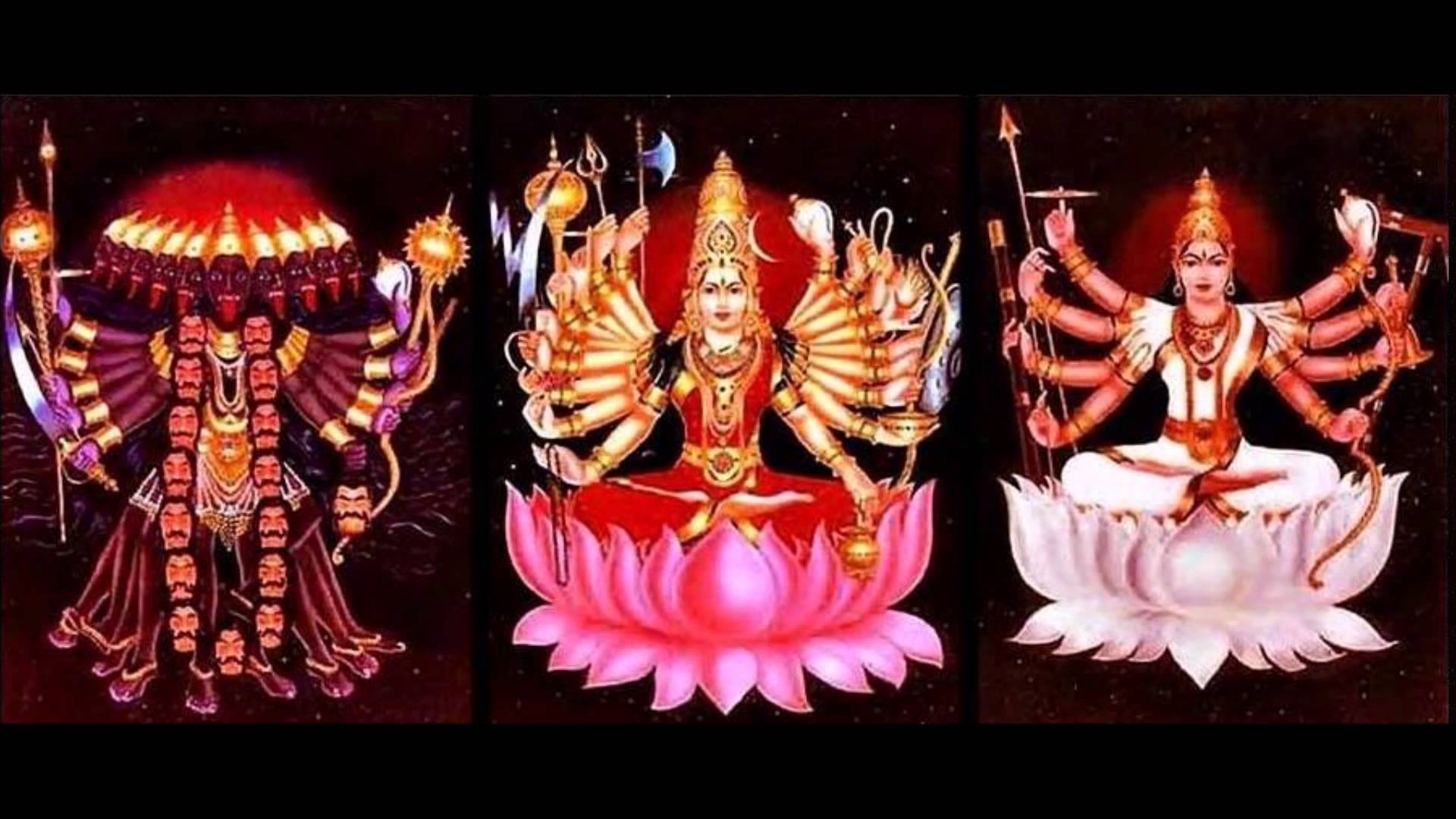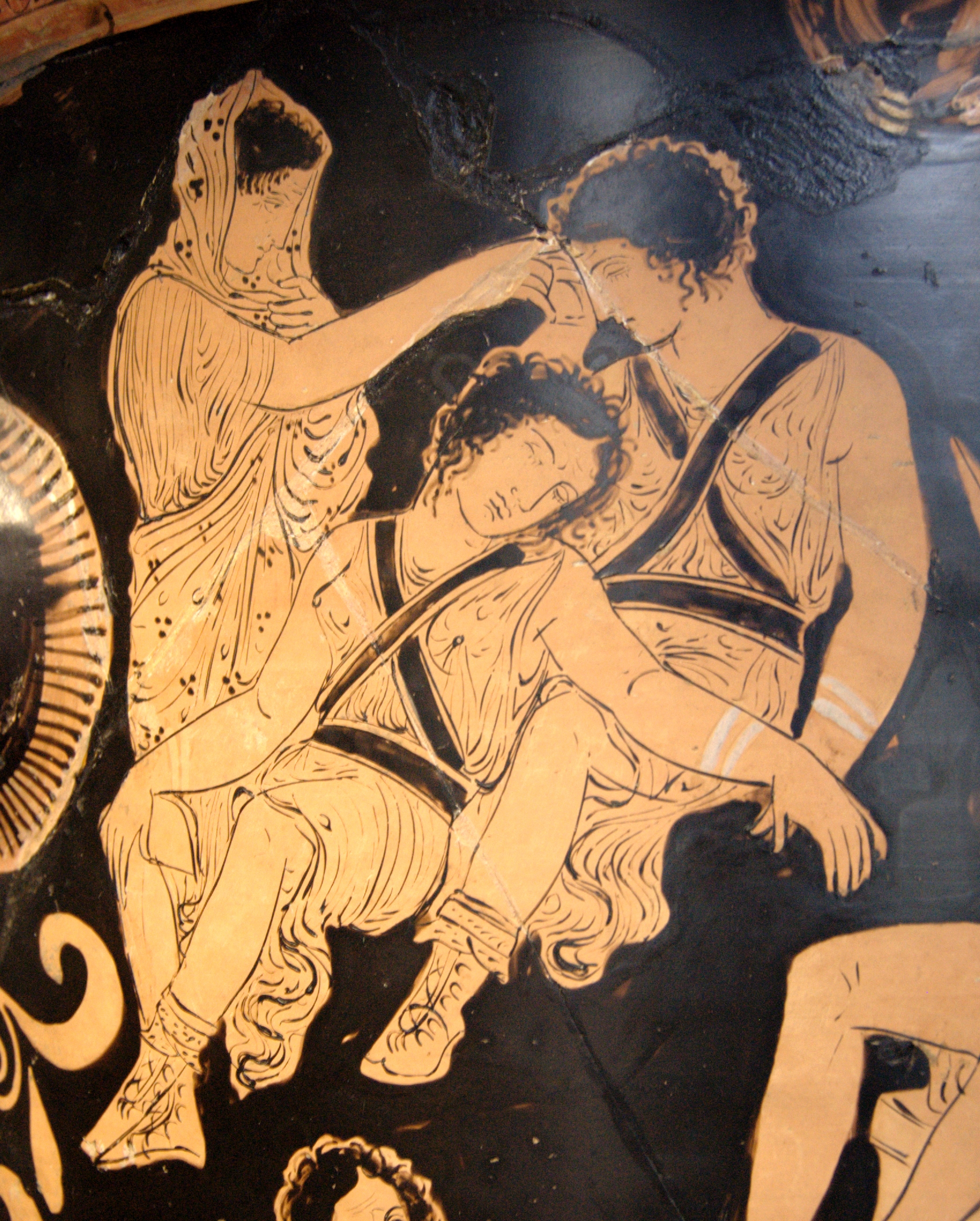|
Matrones
The Matres (Latin for "mothers") and Matronae (Latin for "matrons") were female deities venerated in Northwestern Europe, of whom relics are found dating from the first to the fifth century AD. They are depicted on votive offerings and altars that bear images of goddesses, depicted almost entirely in groups of three, that feature inscriptions (about half of which feature Continental Celtic names and half of which feature Germanic names) and were venerated in regions of Germania, Eastern Gaul, and Northern Italy (with a small distribution elsewhere) that were occupied by the Roman army from the first to the fifth century. Matres also appear on votive reliefs and inscriptions in other areas occupied by the Roman army, including southeast Gaul, as at Vertillum; in Spain and Portugal, where some twenty inscriptions are known, among them several ones which include local epithets like a dedication to the ''Matribus Gallaicis'' "to the Galician Mothers"; and also in the Romano-Celtic ... [...More Info...] [...Related Items...] OR: [Wikipedia] [Google] [Baidu] |
Norns
The Norns ( non, norn , plural: ) are deities in Norse mythology responsible for shaping the course of human destinies.'' Nordisk familjebok'' (1907) In the ''Völuspá'', the three primary Norns Urðr (Wyrd), Verðandi, and Skuld draw water from their sacred well to nourish the tree at the center of the cosmos and prevent it from rot.The article Nornor' in '' Nordisk familjebok'' (1913). These three Norns are described as powerful maiden giantesses ( Jotuns) whose arrival from Jötunheimr ended the golden age of the gods. The Norns are also described as maidens of Mögþrasir in the ''Vafþrúðnismál''. Beside the three Norns tending Yggdrasill, pre-Christian Scandinavians attested to Norns who visit a newborn child in order to determine the person's future. These Norns could be malevolent or benevolent: the former causing tragic events in the world while the latter were kind and protective. Etymology The origin of the name ''norn'' is uncertain; it may derive from a ... [...More Info...] [...Related Items...] OR: [Wikipedia] [Google] [Baidu] |
Moirai
In ancient Greek religion and mythology, the Moirai (, also spelled Moirae or Mœræ; grc, Μοῖραι, "lots, destinies, apportioners"), often known in English as the Fates ( la, Fata, Fata, -orum (n)=), were the personifications of fate; their Roman equivalent was the Parcae (euphemistically the "sparing ones"), and there are other equivalents in cultures that descend from the Proto-Indo-European culture. Their number became fixed at three: Clotho ("spinner"), Lachesis ("allotter") and Atropos ("the unturnable", a metaphor for death). However, according to the often cited Latin verse ''Clotho colum retinet, Lachesis net, et Atropos occat'', their roles and functions were also seen differently: Clotho, the youngest of the sisters, presided over the moment in which we are born, and held a distaff in her hand; Lachesis spun out all the events and actions of our life; and Atropos, the eldest of the three, cut the thread of human life with a pair of scissors. The role of th ... [...More Info...] [...Related Items...] OR: [Wikipedia] [Google] [Baidu] |
Goddess
A goddess is a female deity. In many known cultures, goddesses are often linked with literal or metaphorical pregnancy or imagined feminine roles associated with how women and girls are perceived or expected to behave. This includes themes of spinning (textiles), spinning, weaving, beauty, love, sexuality, motherhood, domesticity, creativity, and List of fertility deities, fertility (exemplified by the ancient mother goddess cult). Many major goddesses are also associated with magic (supernatural), magic, war, strategy, hunting, farming, wisdom, fate, earth, sky, power (social and political), power, laws, justice, and more. Some themes, such as Discordianism, discord or disease, which are considered negative within their cultural contexts also are found associated with some goddesses. There are as many differently described and understood goddesses as there are male, shapeshifting, or neuter gods. In some faiths, a sacred female figure holds a central place in religious prayer a ... [...More Info...] [...Related Items...] OR: [Wikipedia] [Google] [Baidu] |
Ptuj
Ptuj (; german: Pettau, ; la, Poetovium/Poetovio) is a town in northeastern Slovenia that is the seat of the Municipality of Ptuj. Ptuj, the oldest recorded city in Slovenia, has been inhabited since the late Stone Age and developed from a Roman military fort. Ptuj was located at a strategically important crossing of the Drava River, along a prehistoric trade route between the Baltic Sea and the Adriatic. The area is part of the traditional region of Styria and it was part of the Austria-Hungarian Empire. In the early 20th century the majority of the residents spoke German, but today the population is largely Slovene. Residents of Ptuj are known as ''Ptujčani'' in Slovene. History Earliest history Ptuj is the oldest recorded town in Slovenia. There is evidence that the area was settled in the Stone Age. In the Late Iron Age it was settled by Celts.''PtujTourism.si''.The History of Ptuj. Accessed November 8, 2006. AD 69: Ptuj is mentioned for the first time By the 1st centur ... [...More Info...] [...Related Items...] OR: [Wikipedia] [Google] [Baidu] |
Matrika
Matrikas (Sanskrit: मातृका (singular), IAST: mātṝkās, lit. "divine mothers") also called Matar or Matri, are a group of mother goddesses who are always depicted together in Hinduism. The Matrikas are often depicted in a group of seven, the Saptamatrika(s) (Seven Mothers). However, they are also depicted as a group of eight, the Ashtamatrika(s). In the '' Brihat Samhita'', Varahamihira says that "Mothers are to be made with cognizance of (different major Hindu) gods corresponding to their names." They are associated with these gods as their spouses or their energies (''Shaktis''). Brahmani emerged from Brahma, Vaishnavi from Vishnu, Maheshvari from Shiva, Indrani from Indra, Kaumari from Skanda, Varahi from Varaha and Chamunda from Devi. and additionals are Narasimhi from Narasimha and Vinayaki from Ganesha. Originally believed to be a personification of the seven stars of the star cluster the Pleiades, they became quite popular by the seventh century and a ... [...More Info...] [...Related Items...] OR: [Wikipedia] [Google] [Baidu] |
Rudolf Simek
Rudolf Simek (born 21 February 1954) is an Austrian philologist and religious studies scholar who is Professor and Chair of Ancient German studies, German and Scandinavian studies, Nordic Studies at the University of Bonn. Simek specializes in Germanic studies, and is the author of several notable works on Germanic paganism, Germanic religion and Germanic mythology, mythology (including Old Norse religion and Norse mythology, mythology), Germanic peoples, Vikings, Old Norse literature, and the culture of Medieval Europe. Biography Since 1995, Simek has been Professor and Chair of Ancient German and Nordic Studies at the University of Bonn. Simek was appointed Professor of Comparative Religion at the University of Tromsø in 1999, and Professor of Old Nordic Studies at the University of Sydney in 2000. Simek has held a number of visiting professorships, having had long research stays at the universities of Reykjavík University, Reykjavik, University of Copenhagen, Copenhagen, Lo ... [...More Info...] [...Related Items...] OR: [Wikipedia] [Google] [Baidu] |
Tridevi
The Tridevi () are a trinity of supreme divinity in Hinduism, joining a triad of eminent goddesses either as a feminine version of the Trimurti, or as consorts of a masculine Trimurti, depending on the denomination. This triad is typically personified by the Hindu goddesses Saraswati, Lakshmi, and Parvati. In Shaktism, these triune goddesses are the manifestations of Mula-Prakriti or ''Adi Parashakti''. Feminine Trimurti In the traditional androcentric denominations of Hinduism, the feminine Tridevi goddesses are relegated as consorts and auxiliary deities to the more eminent masculine Trimurti gods. In Shaktism, the feminine Tridevi goddesses are given the eminent roles of creator (Mahasaraswati), preserver (Mahalakshmi), and destroyer (Mahakali), with the masculine Trimurti gods being relegated as the auxiliary deities as agents of the feminine Tridevi. Consorts of the Trimurti Saraswati is the goddess of learning, arts, and music, as well as the consort of Brahma ... [...More Info...] [...Related Items...] OR: [Wikipedia] [Google] [Baidu] |
Horae
In Greek mythology the Horae () or Horai () or Hours ( grc-gre, Ὧραι, Hōrai, , "Seasons") were the goddesses of the seasons and the natural portions of time. Etymology The term ''horae'' comes from the Proto-Indo-European ("year"). Function Horae were originally the personifications of nature in its different seasonal aspects, but in later times they were regarded as goddesses of order in general and natural justice. "They bring and bestow ripeness, they come and go in accordance with the firm law of the periodicities of nature and of life", Karl Kerenyi observed, adding "''Hora'' means 'the correct moment'." Traditionally, they guarded the gates of Olympus, promoted the fertility of the earth, and rallied the stars and constellations. The course of the seasons was also symbolically described as the dance of the Horae, and they were accordingly given the attributes of spring flowers, fragrance and graceful freshness; for example, in Hesiod's ''Works and Days'', t ... [...More Info...] [...Related Items...] OR: [Wikipedia] [Google] [Baidu] |
The Morrígan
The Morrígan or Mórrígan, also known as Morrígu, is a figure from Irish mythology. The name is Mór-Ríoghain in Modern Irish, and it has been translated as "great queen" or "phantom queen". The Morrígan is mainly associated with war and fate, especially with foretelling doom, death, or victory in battle. In this role she often appears as a crow, the '' badb''. She incites warriors to battle and can help bring about victory over their enemies. The Morrígan encourages warriors to do brave deeds, strikes fear into their enemies, and is portrayed washing the bloodstained clothes of those fated to die. She is most frequently seen as a goddess of battle and war and has also been seen as a manifestation of the earth- and sovereignty-goddess,Koch, John T. ''Celtic Culture: A Historical Encyclopedia''. ABC-CLIO, 2006. p.1622 chiefly representing the goddess's role as guardian of the territory and its people. The Morrígan is often described as a trio of individuals, all sisters ... [...More Info...] [...Related Items...] OR: [Wikipedia] [Google] [Baidu] |
Charites
In Greek mythology, the Charites ( ), singular ''Charis'', or Graces, were three or more goddesses of charm, beauty, nature, human creativity, goodwill, and fertility. Hesiod names three – Aglaea ("Shining"), Euphrosyne ("Joy"), and Thalia ("Blooming")Hesiod, ''Theogony''907 ff – and names Aglaea as the youngest and the wife of Hephaestus. In Roman mythology they were known as the , the "Graces". Some sources use the appellation "Charis" as the name of one of the Charites, and equate her with Aglaea, as she too is referred to as the wife of Hephaestus. The Charites were usually considered the daughters of Zeus and Oceanid Eurynome. Rarely, they were said to be daughters of Dionysus and Coronis or of Helios and the Naiad AeglePausanias, ''Description of Greece''9.35.5 or of Hera by an unnamed father. Other possible names of their mother by Zeus are Eurydome, Eurymedousa, or Euanthe. Homer identified them as part of the retinue of Aphrodite. The Charites were also associa ... [...More Info...] [...Related Items...] OR: [Wikipedia] [Google] [Baidu] |
Erinyes
The Erinyes ( ; sing. Erinys ; grc, Ἐρινύες, pl. of ), also known as the Furies, and the Eumenides, were female chthonic deities of vengeance in ancient Greek religion and mythology. A formulaic oath in the ''Iliad'' invokes them as "the Erinyes, that under earth take vengeance on men, whosoever hath sworn a false oath". Walter Burkert suggests that they are "an embodiment of the act of self-cursing contained in the oath". They correspond to the Dirae in Roman mythology. The Roman writer Maurus Servius Honoratus wrote (ca. 400 AD) that they are called "Eumenides" in hell, "Furiae" on Earth, and "Dirae" in heaven. Erinyes are akin to some other Greek deities, called Poenai. According to Hesiod's ''Theogony'', when the Titan Cronus castrated his father, Uranus, and threw his genitalia into the sea, the Erinyes (along with the Giants and the Meliae) emerged from the drops of blood which fell on the Earth ( Gaia), while Aphrodite was born from the crests of sea ... [...More Info...] [...Related Items...] OR: [Wikipedia] [Google] [Baidu] |







.jpg)
